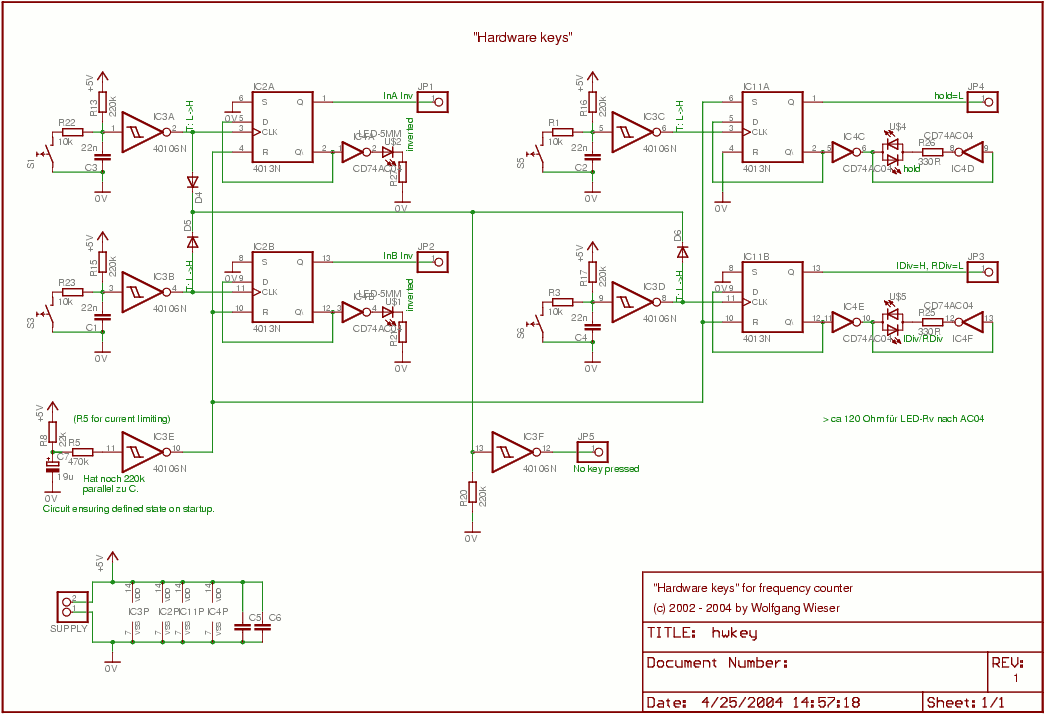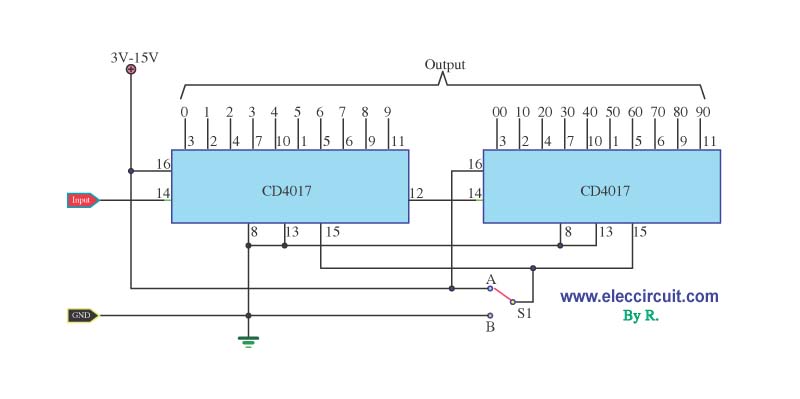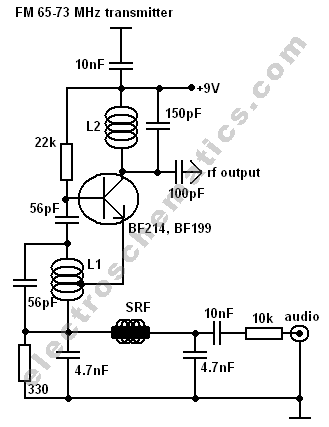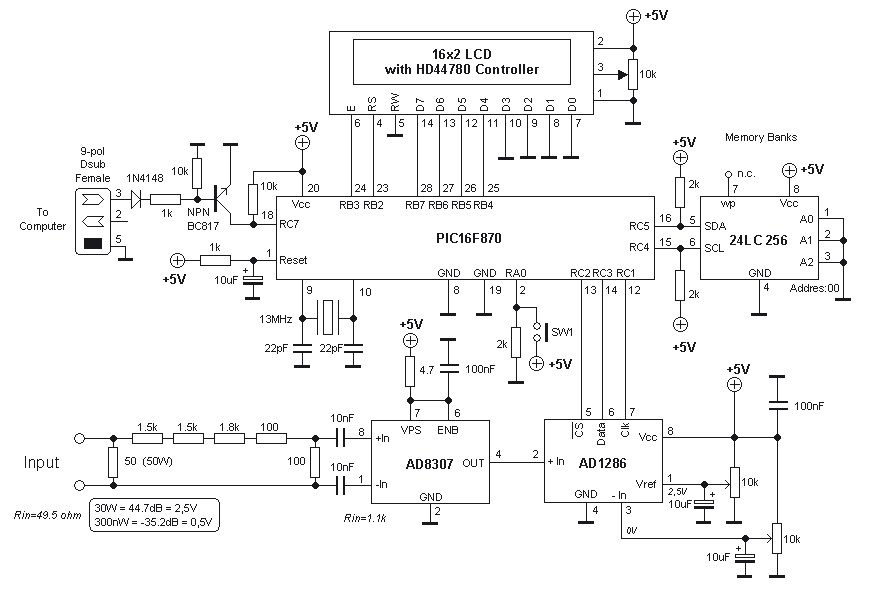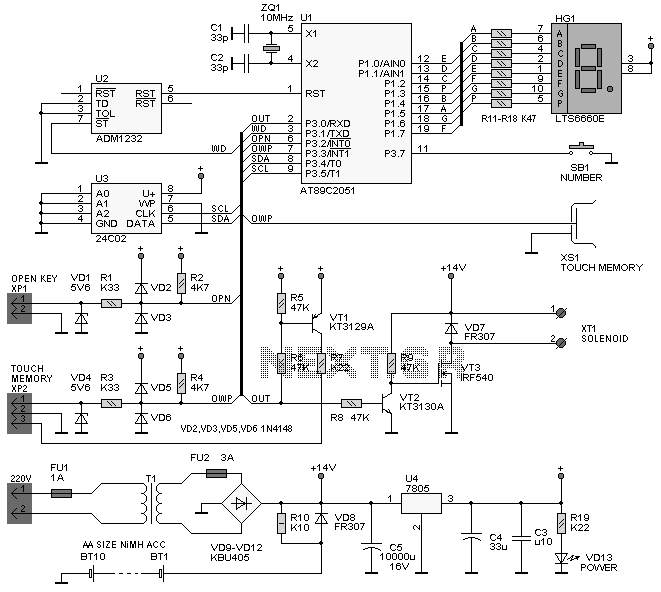
10 Mhz universal counter
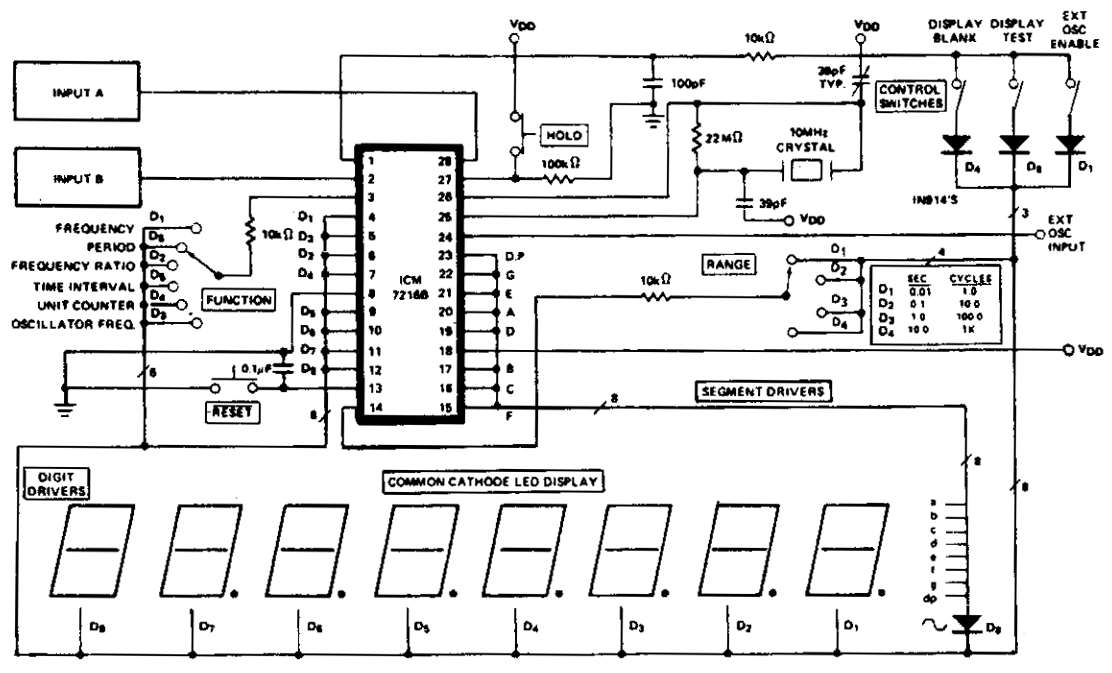
The ICM7216A can be utilized as a minimal component complete Universal Counter. This circuit is capable of handling input frequencies of up to 10 MHz at INPUT A and 2 MHz at INPUT B. In cases where the signal at INPUT A exhibits a very low duty cycle, it may be necessary to employ a 74121 monostable multivibrator or a similar circuit to extend the input pulse width, ensuring it is at least 50 ns in duration.
The ICM7216A is a versatile universal counter designed for a range of applications, including frequency measurement, event counting, and time interval measurement. It features dual input channels, INPUT A and INPUT B, which can accommodate high-frequency signals, making it suitable for various digital signal processing tasks. The ability to handle frequencies up to 10 MHz on INPUT A and 2 MHz on INPUT B allows for flexibility in applications where different signal characteristics are present.
When dealing with INPUT A, it is crucial to ensure that the duty cycle of the incoming signal is adequate for reliable counting. A low duty cycle can result in missed counts due to insufficient pulse width. To mitigate this issue, the integration of a 74121 monostable multivibrator is recommended. This device can generate a fixed-width pulse in response to an incoming signal, effectively stretching the pulse duration to meet the minimum requirement of 50 ns. The monostable multivibrator operates by triggering on the leading edge of the input pulse and producing a stable output pulse of defined duration, which can then be fed into INPUT A of the ICM7216A.
The complete circuit would typically include the ICM7216A, the 74121 monostable multivibrator, and necessary passive components such as resistors and capacitors to set the pulse width and stabilize the operation. Proper design considerations should also be made regarding power supply decoupling and signal integrity to ensure accurate and reliable counting performance. Overall, the ICM7216A, when combined with the appropriate support circuitry, forms a robust solution for high-frequency counting applications.The ICM7216A or can be used as a minimum component complete Universal Counter. This circuit can use input frequencies up to 10 MHz at INPUT A and 2 MHz at INPUT B. If the signal at INPUT A has a very low duty cycle it may be necessary to use a 74121 monostable multivibrator or similar circuit, to stretch the input pulse width to be able to guarantee that it is at least 50 ns in duration 🔗 External reference
The ICM7216A is a versatile universal counter designed for a range of applications, including frequency measurement, event counting, and time interval measurement. It features dual input channels, INPUT A and INPUT B, which can accommodate high-frequency signals, making it suitable for various digital signal processing tasks. The ability to handle frequencies up to 10 MHz on INPUT A and 2 MHz on INPUT B allows for flexibility in applications where different signal characteristics are present.
When dealing with INPUT A, it is crucial to ensure that the duty cycle of the incoming signal is adequate for reliable counting. A low duty cycle can result in missed counts due to insufficient pulse width. To mitigate this issue, the integration of a 74121 monostable multivibrator is recommended. This device can generate a fixed-width pulse in response to an incoming signal, effectively stretching the pulse duration to meet the minimum requirement of 50 ns. The monostable multivibrator operates by triggering on the leading edge of the input pulse and producing a stable output pulse of defined duration, which can then be fed into INPUT A of the ICM7216A.
The complete circuit would typically include the ICM7216A, the 74121 monostable multivibrator, and necessary passive components such as resistors and capacitors to set the pulse width and stabilize the operation. Proper design considerations should also be made regarding power supply decoupling and signal integrity to ensure accurate and reliable counting performance. Overall, the ICM7216A, when combined with the appropriate support circuitry, forms a robust solution for high-frequency counting applications.The ICM7216A or can be used as a minimum component complete Universal Counter. This circuit can use input frequencies up to 10 MHz at INPUT A and 2 MHz at INPUT B. If the signal at INPUT A has a very low duty cycle it may be necessary to use a 74121 monostable multivibrator or similar circuit, to stretch the input pulse width to be able to guarantee that it is at least 50 ns in duration 🔗 External reference
